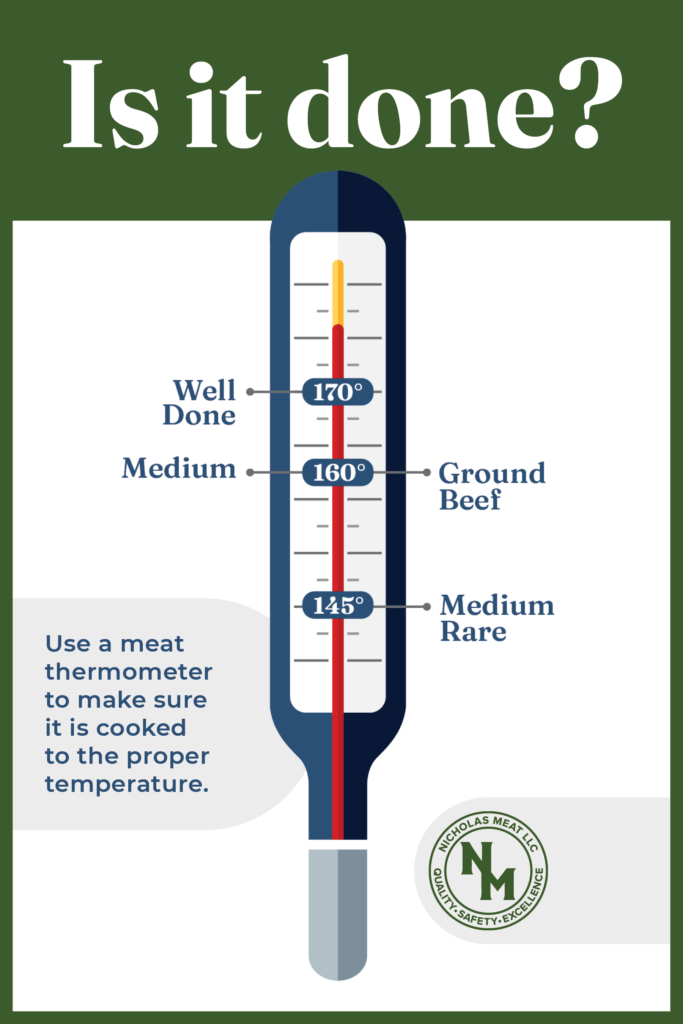What's Your Beef Temperature?
December 10, 2021
December 10, 2021
There is no question about what we like for dinner – Beef! You’ll hear a wide range of opinions on the best cuts and the best way to prepare them.
No matter what your favorite dish is, it’s important to follow food safety guidelines for the best beef experience.
At Nicholas Meat, we are committed to the principles of quality, safety and excellence. We operate under a fully implemented, validated and continually verified food safety system. Our food safety system is monitored by Nicholas Meat’s quality assurance department and verified by a combination of outside third-party auditing agencies and USDA FSIS inspection personnel.
Keeping Cool

You can be confident that the beef you buy is safe and of high quality. You play an important role in making sure it stays that way by following food safety guidelines.
Once you purchase beef, refrigerate or freeze it as soon as possible. Different cuts vary in the amount of time they can be safely stored in the refrigerator. See this chart for guidelines. Frozen beef should be thawed in the refrigerator, never on the counter or at room temperature. There is no need to bring beef to room temperature before cooking.
Before you handle fresh meat, be sure to wash your hands. Keep raw meat and juices away from other foods and wash all knives, cutting boards, utensils and your hands in hot, soapy water.
More tips on handling beef safely.
Is It Done?
One of the most important, and sometimes difficult, factors in safely preparing beef is proper temperature. Color is not an accurate way to tell if meat is properly cooked. A food thermometer is the only accurate measurement. This video from Cattlemen’s Beef Board shows how to measure temperature for steaks, roasts and ground beef.
Steaks can be safely cooked to various temperatures depending on your preference.
It is recommended to allow the steak to rest for at least 3 minutes after it is done cooking. Ground beef, including hamburger patties and meatloaf, should always be cooked to 160°.
For more beef cooking tips, visit the Pennsylvania Beef Council. They have a large library of recipes and cooking lessons. You can also ask questions of the online guide Chuck Knows Beef. Use Chuck to answer all your beefy cooking questions from what temperature is medium-rare to walking you through the steps on pressure cooking a roast.
Following food handling guidelines and cooking to the proper temperature can ensure you enjoy beef that is safe, nutritious and delicious.